Occupational Safety Training for Flute Manufacturing
99,000 ₫
Note: The above price is calculated per person and may vary depending on the number of trainees participating in the course and market fluctuations. For more accurate pricing support, please refer to the pricing table or contact our consulting staff directly.
Occupational safety is an important issue in flute manufacturing factories and needs to be addressed promptly to ensure the health and safety of workers and enhance the reputation of businesses. The Occupational Safety Training course is one of the effective solutions to raise awareness on how to prevent workplace accidents for workers involved in flute production.
Table of Contents
Toggle1. Overview of Flute
a. What is a Flute?
The flute is a traditional musical instrument, popular in many cultures around the world, including Vietnam. It is made from various materials such as bamboo, rattan, wood, or metal, depending on the region and the musical traditions of each place. The flute has a simple structure with a long tube and several small holes to adjust the pitch of the sound when blown.
The sound of the flute is gentle, clear, and is often used in folk songs, traditional music, as well as modern compositions. In Vietnam, the flute is known through types such as vertical flute, transverse flute, and “sáo mèo,” each having its distinct sound characteristics and playing styles.
Flutists usually need skilled breath control and finger techniques to produce accurate and expressive sounds. Learning to play the flute requires not only patience but also love and passion for music, helping players connect more deeply with their culture and soul.

b. Machinery Used in Flute Production
- CNC Lathe (Computer Numerical Control): This is an important machine in crafting flute tubes. The CNC lathe helps precisely process parts of the flute such as the body, tone holes, and joints. The accuracy of CNC ensures the tone holes are drilled evenly and correctly positioned, helping the flute produce clear and precise sounds.
- Precision Drilling Machine: This machine is used to drill holes on the flute body. These holes must be drilled with high precision to ensure the correct tone and good quality. Precision drilling machines are often computer-controlled for absolute accuracy.
- Cutting and Material Processing Machines: For flutes made of metal, wood, or bamboo, cutting and material processing machines are necessary to cut, grind, and polish parts. These machines help create flute tubes with accurate size and shape, while smoothing the surface to provide comfort for the player.
- Polishing and Surface Treatment Machines: To ensure the flute has a smooth and aesthetic surface, manufacturers use polishing and surface treatment machines. These machines remove scratches, polish, and protect the flute’s surface from environmental impacts.
- Sound Testing Machines: These special machines are used to test the sound quality of the flute. Sound testing machines help determine whether the tone holes and flute structure meet the requirements, thereby ensuring each product has standard and harmonious sound.

c. Famous Flute Brands
- Yamaha: One of the world’s leading musical instrument brands, Yamaha is famous for high-quality flutes ranging from beginner models to professional-level flutes. Yamaha products are known for clear sound, durable design, and ease of use.
- Pearl: Pearl specializes in premium silver and gold flutes. Their flutes are highly regarded for sound quality and luxurious, exquisite design. Pearl continually innovates technology to provide the best products for professional artists.
- Muramatsu: Founded in Japan, Muramatsu is one of the most prestigious flute brands globally. Their flutes are handcrafted with high-quality materials, ensuring refined sound and superior durability. Many top artists choose Muramatsu flutes for major performances.
- Powell: Powell has long been known for high-end silver and gold flutes. With attention to every detail in craftsmanship, Powell flutes offer a clear sound and excellent responsiveness, suitable for solo performances and orchestras alike.
- Altus: Altus is famous for combining traditional craftsmanship with modern technology. Their flutes are made from premium materials such as silver, gold, and platinum, delivering rich and sharp sounds. Many artists select Altus for important performances.
- Gemeinhardt: One of the largest flute manufacturers in the USA, Gemeinhardt is known for affordable yet high-quality flutes. They offer a wide range of flutes for beginners to professionals, meeting diverse player needs.

d. Specific Jobs in the Flute Manufacturing Factory
Group 1
- Executive Director, Deputy Executive Director, Department Heads in the flute manufacturing factory.
Group 2
- Safety Officers: managing safety in the factory, designing safety procedures, supervising and enforcing staff compliance with safe working protocols.
Group 3
- Processing and Shaping: Using CNC lathes and other processing machines, workers cut, grind, and shape the flute body. This work requires high precision to ensure parts fit perfectly.
- Drilling Tone Holes: Tone holes are precisely drilled according to the design using specialized drilling machines. Workers must carefully check to ensure the position and size of each hole is accurate to produce correct sounds.
- Assembly: Flute parts such as the main body, headjoint, and accessories are assembled together. This job requires high manual skill to ensure parts fit securely and precisely.
- Polishing and Finishing: Flutes are polished to remove scratches and create a smooth surface. Other finishing steps like gold or silver plating or protective coating are also done at this stage.
- Quality Inspection: Each completed flute is tested for sound quality and appearance. Engineers check each tone hole, joint tightness, and overall sound to ensure the highest standards.
- Packing and Shipping: After inspection, flutes are carefully packed to protect against damage during transport. Workers label and prepare products for delivery to stores or customers.
Group 4
- Office work, support, sales, marketing.
- Production management, quality control, human resources management, materials management, finance and accounting management.
- Research and development of new products, product packaging design.
2. Overview of Occupational Safety Training Course for Flute Production
Within the scope of this article, we focus on issues related to Group 3 because Group 3 is the group directly involved in the production process and faces the highest occupational safety risks. For more information on other groups, please refer here.
a. What is Group 3 Occupational Safety Training?
- Group 3 Occupational Safety Training consists of sessions that provide workers with awareness and methods to prevent workplace accidents.
- The safety training course helps workers recognize and avoid hazards, minimizing the risks of workplace accidents during work.
REGISTER FOR OCCUPATIONAL SAFETY TRAINING SERVICE
b. Training Duration
Initial safety training duration
- The total training time is at least 24 hours, including examination time.
- 8 hours of theoretical study on the system of policies and laws regarding occupational safety and hygiene
- 8 hours of theoretical study on basic knowledge of occupational safety and hygiene
- 4 hours of theoretical study on specialized training content
- 2 hours of practical training on specialized content
- 2 hours for the final theoretical exam of the training course
The safety training center will arrange the training time into multiple sessions depending on the worker’s schedule. Usually, there are 6 training sessions over 3 days, provided the manufacturing company arranges continuous learning time.
Periodic safety training duration
- Before the occupational safety card expires, workers who want to renew it must attend a periodic occupational safety training course, with the periodic training time being at least 50% of the initial training duration.
Explanation: The total periodic occupational safety training time is at least 12 hours, including examination time. After completing the periodic training and passing the exam, workers will be re-issued or have their occupational safety card extended.
c. Training Course Content
| No. | TRAINING CONTENT | TRAINING DURATION (HOURS) | |||
| Total | Including | ||||
| Theory | Practice | Examination | |||
| I | System of policies and laws on occupational safety and hygiene | 8 | 8 | 0 | 0 |
| 1 | Overview of the legal normative documents system on occupational safety and hygiene. | 6 | 6 | ||
| 2 | System of standards and technical regulations on occupational safety and hygiene. | 1 | 1 | ||
| 3 | Specific regulations from state management agencies on occupational safety and hygiene when constructing, expanding, or renovating facilities for production, use, storage, and inspection of machinery, equipment, materials, and substances with strict occupational safety and hygiene requirements. | 1 | 1 | ||
| II | Basic knowledge of occupational safety and hygiene | 8 | 8 | 0 | 0 |
| 1 | Basic knowledge about hazardous and harmful factors in the workplace. | 4 | 4 | ||
| 2 | Methods to improve working conditions. | 1 | 1 | ||
| 3 | Safety culture in production and business. | 1 | 1 | ||
| 4 | Rights and obligations of employers and employees; policies and regimes regarding occupational safety and hygiene for workers; functions and duties of safety and hygiene networks and personnel. | 1 | 1 | ||
| 5 | Safety and hygiene regulations, signs, safety and hygiene instructions, use of safety equipment and personal protective equipment; skills in first aid for workplace accidents, prevention of occupational diseases. | 1 | 1 | ||
| III | Specialized training content | 6 | 4 | 2 | 0 |
| Comprehensive knowledge of machinery, equipment, substances generating hazardous and harmful factors; analysis, evaluation, and management of occupational safety and hygiene risks; safe working procedures with machinery, equipment, and substances with strict safety and hygiene requirements. | 6 | 4 | 2 | ||
| IV | Final safety training examination at the end of the course | 2 | 2 | 0 | 0 |
| Total | 24 | 22 | 2 | ||
See more about the training content of all 6 groups
d. Occupational Safety Card
After completing the occupational safety training course and passing the exam, workers will be issued an Occupational Safety Card (commonly called Occupational Safety Certificate for Group 3).
This Group 3 safety card clearly displays information such as full name, date of birth, specific job and work environment. It also includes training duration, official red stamp, and signature confirming course completion.
According to the card issuance regulations stated in Clause 2 of Article 24 of Decree 44/2016/ND-CP, there are two cases:
- If there is a labor contract between the employer and employee, the employer must sign, stamp, and certify the safety card for the Group 3 trained worker after the training course and passing the exam.
- If the worker is freelance or temporary without a labor contract, the training unit must sign, stamp, and certify the safety card for the worker after the training and passing the exam.

3. Identifying Hazards Affecting Workers in Flute Production
- Mechanical hazards: Machines such as CNC lathes, drilling machines, and cutting machines can cause mechanical injuries like cuts, pinching, or crushing. These hazards often occur when the machines are operating or during maintenance.
- Identification: Signs such as loud noise, strong vibrations, and rapidly moving machine parts are warning signals for mechanical hazards.
- Chemical hazards: The flute production process may use chemicals such as solvents, cleaning agents, or plating substances. These chemicals can irritate the skin, eyes, or respiratory system, and in severe cases, cause poisoning.
- Identification: Symptoms such as difficulty breathing, skin irritation, and nausea may indicate exposure to hazardous chemicals.
- Noise hazards: Processing machines often emit loud noise, which can harm workers’ hearing if exposed for long periods.
- Identification: Continuous loud noise, tinnitus, or hearing loss.
- Ergonomic hazards: Tasks requiring high precision and continuous work such as drilling, assembling, and polishing can cause muscle strain, back pain, and joint problems.
- Identification: Symptoms such as muscle fatigue, joint stiffness, and reduced mobility.
- Fire hazards: The use of flammable materials such as wood and chemicals can create fire risks.
- Identification: Signs such as burning smells, smoke, and unusual temperature increases.

4. Safety Measures When Participating in Flute Production
- Use of Personal Protective Equipment (PPE):
- Protective Gloves: To protect hands from mechanical injuries and chemicals.
- Safety Glasses: To protect eyes from dust, debris, and chemicals.
- Noise-Cancelling Headphones or Earplugs: To protect hearing when working in noisy environments.
- Protective Clothing: To protect the body from mechanical impacts and chemicals.
- Safety Training and Education:
- Machine Operation Training: Employees need training on the safe operation of equipment such as CNC lathes, drills, and cutting machines.
- Chemical Handling Training: Training on the safe use, storage, and handling of chemicals.
- Updating Occupational Safety Knowledge: Regularly organizing training sessions to update the latest safety regulations and measures.
- Regular Maintenance and Inspection of Machinery:
- Machine Maintenance: Perform regular maintenance to ensure equipment always operates well and safely.
- Safety Checks: Regularly inspect protective devices such as guards, safety switches, and emergency stop systems.
- Improving the Working Environment:
- Ventilation System: Ensure the factory air is always fresh, especially in areas working with chemicals.
- Noise Control: Implement soundproofing measures or arrange work areas away from noise sources.
- Neat Organization: Keep the workspace tidy and free of obstacles to reduce accident risks.
- Periodically conduct occupational environment monitoring in factories to collect and analyze harmful factors affecting workers, then adjust to reduce hazards to prevent occupational diseases.
- Applying Ergonomic Safety Measures:
- Proper Workplace Arrangement: Design workstations so workers can work comfortably and avoid muscle strain.
- Use of Support Tools: Provide tools that reduce physical burden and stress on the body.
- Perform Stretching Exercises: Encourage employees to do regular stretching exercises to prevent joint and muscle problems.
- Chemical Safety Management:
- Safe Chemical Storage: Use specialized containers and store chemicals in cool, well-ventilated areas away from fire sources.
- Warning Signs and Usage Instructions: Place warning signs and instructions for chemical use at the workplace.
- Emergency Response Planning:
- Develop Emergency Plans: Create response plans for emergencies such as fires, chemical leaks, or workplace accidents.
- Emergency Response Training: Train employees in first aid, use of firefighting equipment, and safe evacuation procedures.
5. Benefits of Occupational Safety Training in Flute Production
An Toan Nam Viet provides your company with the following excellent benefits upon completing occupational safety training courses as regulated in Decree 44/2016/ND-CP on Occupational Safety and Hygiene for companies and enterprises.
- Workers can identify potential accident risks and thus take preventive measures to avoid workplace accidents.
- Your company establishes risk prevention measures in production, operation, and maintenance processes.
- Minimizes costs associated with occupational safety hazards.
- Uninterrupted production processes help increase labor productivity and product quality.
- Compliance with occupational safety laws to avoid legal risks.
- Creates credibility and professionalism in all aspects, thereby enhancing your company’s brand.
Nam Viet’s training courses are solutions to prevent and counter external risk factors affecting individuals, helping them avoid dangers that could cause injuries or, worse, fatalities.
REGISTER FOR OCCUPATIONAL SAFETY TRAINING SERVICE
6. Customer Feedback After Completing Flute Production Safety Training
An Toan Nam Viet has many years of experience accompanying numerous businesses in Vietnam in general and southern provinces in particular. This responsibility is very precious to Nam Viet, which is why our Occupational Safety Training is increasingly professional. The driving force behind An Toan Nam Viet’s growth comes from both positive feedback and suggestions from businesses. Below are some testimonials from our valued partners.
Bac Nam E&C Joint Stock Company
“The first time using An Toan Nam Viet’s service, I was very surprised by the enthusiastic 24/7 support from the consulting team. The class organization was quick and convenient for our company; thank you very much for Nam Viet’s service!”
Hoa Dat Construction and Trading Joint Stock Company
“Nam Viet’s service has helped us greatly in simplifying occupational safety and completing safety documentation for the working process. The consulting team was enthusiastic and timely in answering our questions. Five stars for Nam Viet.”
See more customer interviews after using An Toan Nam Viet’s services
7. An Toan Nam Viet’s Occupational Safety Training Capability
An Toan Nam Viet is a reputable and quality occupational safety training center in Vietnam today. Safety training sessions are continuously conducted at production workshops, factories, or construction sites across the country (all 63 provinces in Vietnam).
REGISTER FOR OCCUPATIONAL SAFETY TRAINING SERVICE
Occupational Safety Training License
- An Toan Nam Viet has been inspected and certified by the Safety Department of the Ministry of Labor, Invalids and Social Affairs to be eligible for occupational safety and hygiene training activities. This further strengthens our capacity in occupational safety training.

Training Materials and Lectures
- Before safety training materials are used in ATLĐ training courses, they are reviewed and approved to ensure the lectures are always accurate and effective when applied.
- Our instructors’ teaching methods are standardized according to An Toan Nam Viet’s training standards, developed by experts in occupational safety and hygiene training to deliver the highest knowledge absorption effectiveness for learners.
Facilities
- Controlling environmental factors in classrooms enhances teaching performance and students’ knowledge absorption.
- Our training facilities always provide spacious classrooms meeting standards for area, lighting, training equipment, etc.
8. Nationwide Reputable and Quality Safety Training Center
At An Toan Nam Viet, we always prioritize the professionalism and dedication of occupational safety training. For us, imparting self-protection knowledge to workers to equip them with safety on their livelihood journey contributes to nation-building.
To ensure effective training, we meticulously prepare every detail, no matter how small—from preparing tools, teaching aids, equipment, to curricula, materials, sound, and lighting.
Our occupational safety instructors are experts with many years of experience. They even have research projects identifying hazards in all industries and ways to prevent them.
Their lectures are based on practical experience and delivered in an engaging, easy-to-understand way for workers. These factors help workers feel comfortable during training and absorb knowledge well. Of course, the knowledge delivered strictly follows Decree 44/2016/ND-CP.
Thus, workers learn many hazard prevention measures and how to protect themselves, applying them appropriately in their actual work.
Our training center proudly provides professional and reputable occupational safety training services with the following advantages:
- Competitive training costs with guaranteed training quality.
- Flexible training schedules adapted to companies’ production situations.
- Fast and lawful occupational safety training certification procedures.
- Instructors with many years of experience.
- Classrooms controlled for factors affecting teaching effectiveness and learners’ knowledge absorption.
- Training materials tailored to occupational safety work at enterprises.
- An Toan Nam Viet works dedicatedly and professionally to support customers accurately and promptly.

9. Additional Reference Materials for Flute Production Occupational Safety Training
- Flute Production Occupational Safety Materials
- Occupational Safety Training Materials
- Occupational Safety Training Test Materials
- Flute Production Occupational Safety Curriculum
- Flute Production Occupational Safety Quiz
No comments yet

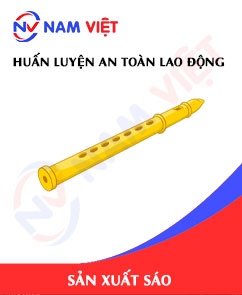
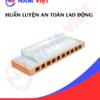
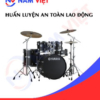




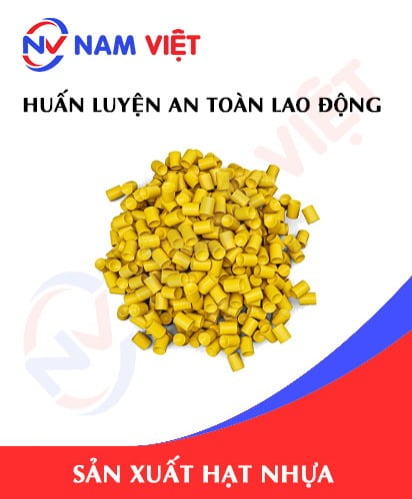
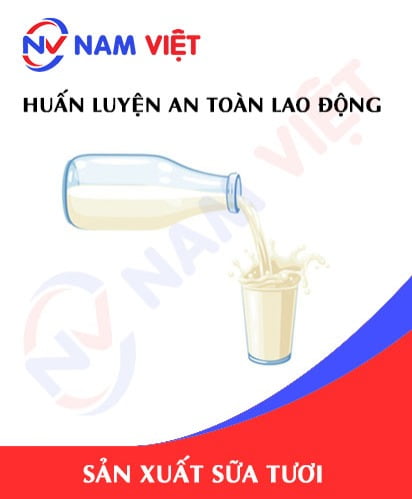

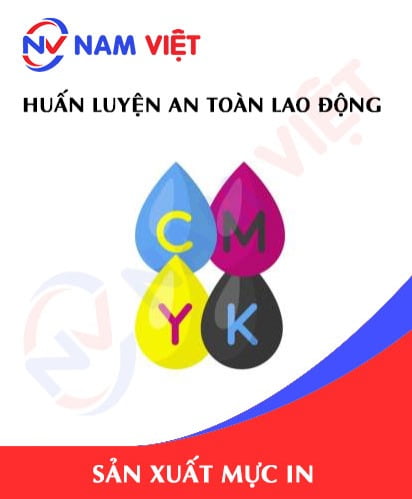
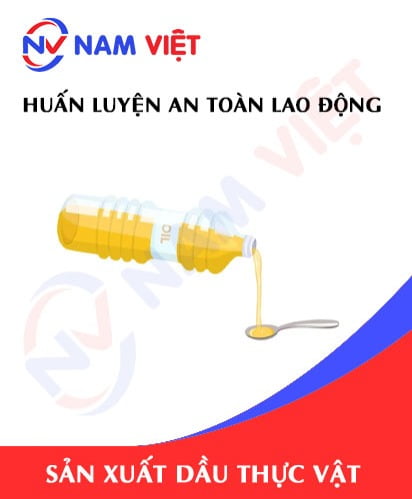

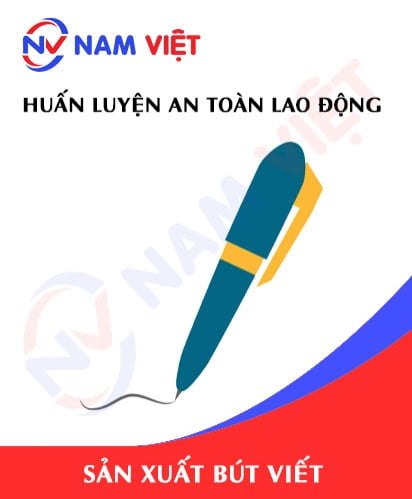
Review Occupational Safety Training for Flute Manufacturing
There are no reviews yet.